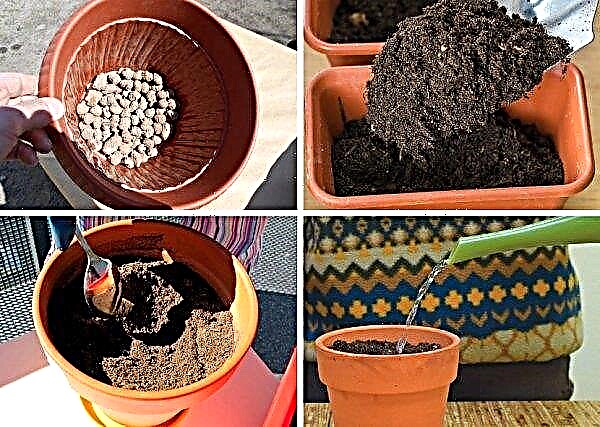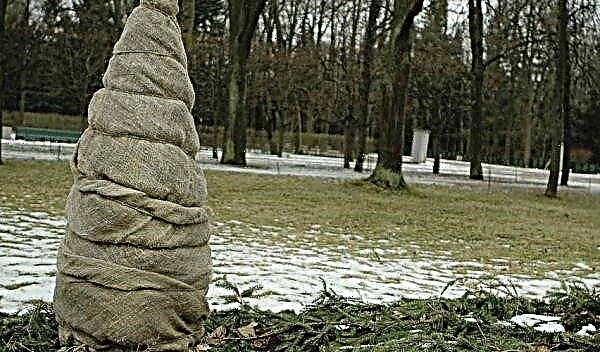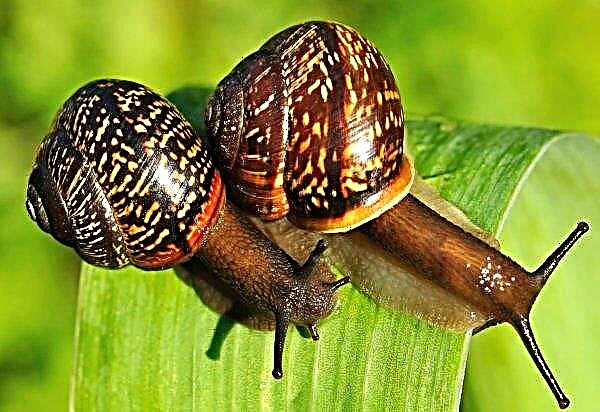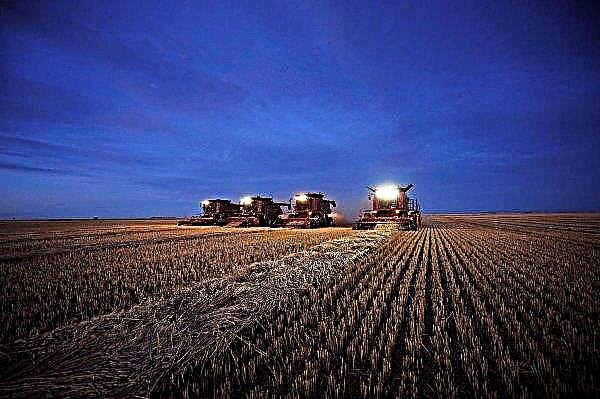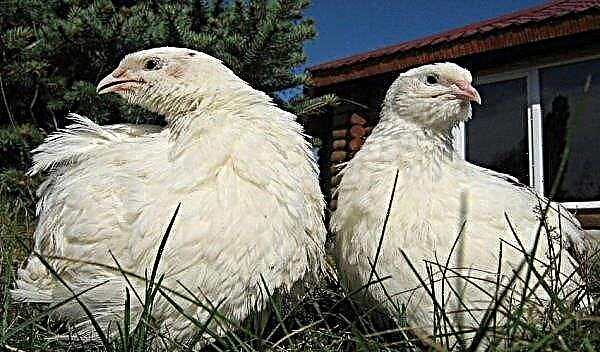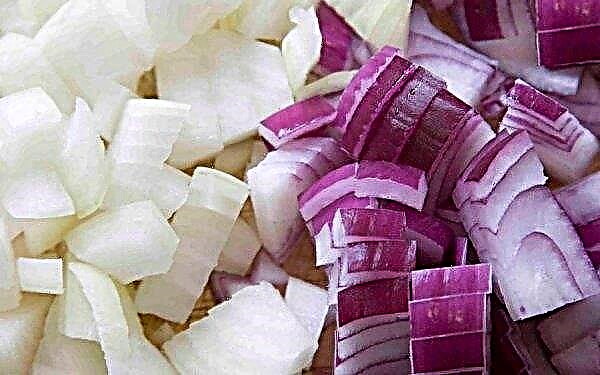There are many plants that can not only decorate the garden plot with their appearance, but also provide its owner with useful and tasty fruits. One of them is the Chinese magnolia vine, which is very popular among summer residents. About how to properly grow this culture, and what are its features, will be discussed in the article.
Description of Schisandra
Schisandra chinensis is a tree-like climbing plant (liana), belongs to the family Schisandra, is a deciduous perennial. In the wild, grows in China and the Far East. In the last decade, a bush type of culture was also introduced, represented by several dozen fruit varieties with high yields.
The stem of the liana usually grows 12-15 m long, covered with a rough brown bark. Young shoots have a smoother, lighter, yellowish bark. The leaves are dark green, medium in size (up to 10 cm long) with distinct veins. They have an elliptical shape with a pointed end, the edges are serrated. Shoots, stems and foliage exude a light lemon scent.

The flowers of the plant are small (1-1.5 cm in diameter), usually milky white or white-pink in color with a subtle but pronounced aroma. They grow in groups at the bases of young shoots. After flowering, a brush with round red berries forms from each bud.
Did you know? Lemongrass foliage contains twice as much ascorbic acid than its fruits themselves, so it used to be used to make medicinal tea.
How to grow lemongrass in your country house
The plant's features make it very popular among gardeners: the weaving stalk becomes a wonderful element of landscape design, and bright fruits are great for homemade preparations (jam, fruit drinks, tinctures). The culture is unpretentious and does not require complicated care. The bush propagates in different ways, you just need to choose the most affordable. To grow lemongrass in your country house, there is no need to make a lot of effort, but you should familiarize yourself with the key points of this process.

Where to plant
The success of growing Chinese magnolia vine is largely determined by the right choice of place. The plant is not very sensitive to the composition of the soil; it grows well on all types of soil, subject to one important condition: good drainage. It is stagnation of moisture that is dangerous for the root system of the vine.
Important! If the leaves of lemongrass began to lighten, then this indicates an excess of light. In this case, it is necessary to organize artificial shading.
As for the geographical location, it is worth giving preference to a well-lit place, protected from winds and drafts. A site is suitable near the wall of the house, gazebo or fence, where you can direct the weaving branches of lemongrass. In regions with colder climates, it is recommended to plant a vine on the west side of the garden, and in the south - on the east. Thus, the plant will be illuminated by the sun for the time it needs.

Landing time
You can plant Chinese lemongrass in spring and autumn. Planting dates depend on the region of cultivation. So, in the southern regions, October (the first half) is considered the optimal time. For middle latitudes with cold winters, spring planting is preferable: from the second decade of April to early May, after the retreat of night frosts.
How to plant
Dig the soil on the site before planting and fertilize: the best is humus, evenly distributed over the surface of the soil, as well as ash. After that, another layer of soil is poured on top and loosened to redistribute nutrients and improve air exchange.
Despite the popularity of Chinese magnolia vine among gardeners, it is still not easy to find its seedlings. This is probably why lovers of this plant resort to various available ways of propagating it. There are standard methods for growing an adult bush: from seeds, young shoots, cuttings. All these methods are effective, and the choice depends on personal preferences and convenience for each summer resident.

Seeds
It is not difficult to grow lemongrass from seeds, but this process is quite lengthy and requires strict adherence to deadlines. In most cases, those inexpensive gardeners who do not have an adult shrub from which it would be possible to obtain cuttings resort to this inexpensive method. It is noted that seedlings grown from seeds are easier to adapt and more resistant to external conditions.
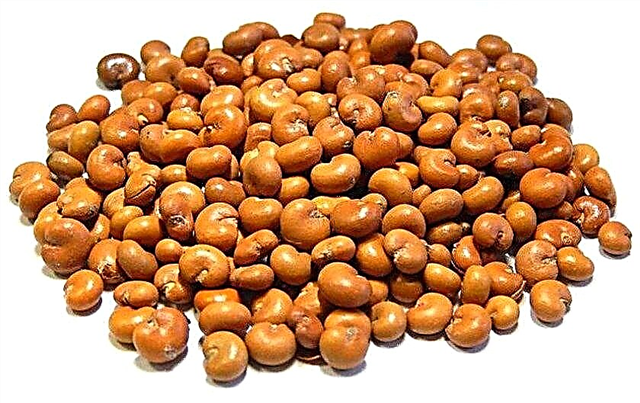
The preparation and landing technology includes a number of step-by-step actions:
- From ripened fruits, seeds (seeds) are collected, washed, dried and stored in a paper towel or envelope.
- At the beginning of winter (in December), the seeds are prepared for stratification, soaking in water for three days.
- The prepared material is wrapped in a cotton towel and placed in a container with wet sand for a month at a temperature of + 20 ... + 22ºC. Each week, the bundle is removed, deployed and ventilated for 15 minutes. After the procedure, a napkin with seeds is rinsed with tap water and again sent to the sand.
- After the prescribed 30 days, the seeds of lemongrass are buried in a small container with sand and stored at a temperature of about 0ºC. It can be stored indoors or in a refrigerator if it has a low temperature zone.
- In February, the pot with the material is moved to a warmer place with a temperature of + 6 ... + 8ºC, for example, in the vegetable compartment of the refrigerator, and left there for another 1–1.5 months, until the seeds begin to burst.
- Further, seeds ready for planting are sown in sandy peat soil in long wooden boxes, deepened by 4 cm and sprinkled with earth. Boxes are covered with glass or plastic wrap. The soil is regularly moistened with a spray bottle.
- After the emergence of sprouts, the film is removed from the boxes and seedlings are exposed in a well-lit place (but not in direct sunlight) and continue to water.
- As soon as the plants release two pairs of leaves, transplantation into the open ground is allowed. Usually this period falls at the beginning of summer.
Video: Stratification of Schisandra seeds
Young animals are planted not in holes, but in a furrow with a depth of 5 cm and at the same distance from each other. The soil around planted seedlings is regularly watered and loosened.
Sprout
This method is considered the simplest and most affordable, and therefore it is used most often. In order to get a new plant, you need to get only a few young offspring with buds from an adult bush. The shoot is separated from the mother plant along with part of the root (appendage). The procedure is carried out using a garden shovel, trying to carefully disconnect the offspring from the main stem.
Important! The neck of the root must be at the level of the surface of the earth; it cannot be excessively deepened.
Then the resulting material must be planted in any large container (an ordinary flower pot is suitable) in peat and sandy soil and grow for 2-3 years before being transferred to the site. Caring for a seedling during this period is simple: water as the top layer of the soil dries up and protect it from drafts.
As soon as the seedling has grown enough to transfer to the summer cottage, you need to prepare a place for it:
- Dig a hole 40 cm deep and 70 cm in diameter, pour a layer of drainage mixture 10–12 cm thick on the bottom (expanded clay).
- Fertilize the well with humus, adding 200 g of superphosphate and 50 g of ammonium nitrate there.
- To plant a seedling in the pit along with the earthen lump in which he grew up, sprinkle with earth and water.

Cuttings
This method of reproduction is rarely used, but it is also effective. To do this, you must adhere to the standard rules for grafting cuttings:
- The material is cut only in the summer, choosing for this young green shoots with two or three buds.
- A straight cut is made in the upper part of the cut, at an angle in the lower part. After that, put them in a vessel with water for 10-12 hours.
- Cuttings are pulled out of the water and planted in boxes with a fertile soil mixture (soil sprinkled with a layer of sand), at a distance of 5 cm from each other, tilted so that the lower kidney is deepened.
- Seedlings are covered with agrofibre, through which watering is subsequently carried out. Irrigate plants 3 times a day with water at room temperature, not colder + 20ºC.
- Rooting occurs within a month, after which the tissue is removed and the seedlings are left in the box until autumn, regularly watering.
- In autumn (late September), young growth is removed from the tank along with an earthen lump and stored in a cool place in sawdust until spring.
 Landing on the site is carried out in the spring in accordance with the technology described in the previous paragraph, in standard time periods depending on the region.
Landing on the site is carried out in the spring in accordance with the technology described in the previous paragraph, in standard time periods depending on the region.
How to care for lemongrass after planting
The success of growing Chinese lemongrass in the country largely depends on proper agricultural technology. In most cases, the plant is unpretentious and resistant. However, there are certain features in this process that need to be considered. Next, we will focus on standard measures for caring for this crop in a garden.
Installation of the support
Perhaps the creation of support for lemongrass is a key point, because the plant is a vine and requires conditions for successful growth in length. In addition, climbing up, the plant will receive more light, which, in turn, has a beneficial effect on productivity.

If the bush is planned to be grown separately, then a trellis is installed for it, and immediately after planting the seedling. It is a frame of wooden beams with ropes stretched from the bottom up. Often, to create a decorative look, such a support is designed in the form of a lattice arch.
If the vine is grown near a care or wall, then from planting to the building they put a support in the form of a ladder or an inclined lattice along which the stems are let out. Young shoots are tied to the structure, directing the stems in the right direction.
Watering
This is also an important detail in the care of Chinese lemongrass. Shrub is a very hygrophilous plant. During the entire period of active growth, it is watered abundantly and regularly (about 6 buckets of water for each bush). It is important to remember that 2 days after watering, the soil must be loosened.
Irrigation mode is adjusted depending on weather conditions: so, if there is a drought, then it is carried out without waiting for the topsoil to dry, and if it rains, then you need to wait a couple of days. Young plants respond well to spraying with water, this accelerates the growth of greenery. It is necessary to carry out the procedure in the evening so that the scorching sun does not burn the foliage.

Fertilizer application
It is necessary to feed the bush when it has reached the age of three. The process involves several steps:
- during the growing season, every month the bushes are fed with organic: a solution of mullein (in the ratio of water 1:10) or chicken droppings (1:20);
- at the stage of flowering and fruit formation, the plant is additionally fertilized with nitrofos in accordance with the instructions, at the rate of 50 g per 1 m² of planting;
- in the fall, with the onset of leaf dropping, 60 g of superphosphate and 100 g of wood ash are added to the soil, and watering is done after application.
Mulching of the root well with compost is beneficial for lemongrass growth.

Winter preparations
Adult lemongrass is resistant to cold and does not need additional shelter for the winter. As for young animals, in the first 3 years after transplanting to an open area, it should be additionally insulated. To do this, remove the liana from the supporting structure and lay on a thick layer of foliage, then also sprinkle it on top. It can be additionally laid on top of the spruce branches, in addition to warming, it will protect the plant from rodents.

Pruning
For the first 3 years, the root of the magnolia vine intensively develops, and only then does the intensive growth of the ground part begin. As soon as the plant starts building greenery, you need to worry about pruning.
There are several rules:
- Trimming bushes is best in the fall, after dropping foliage. Initially, all side processes are removed, leaving 3-4 main shoots. In subsequent years, weak shoots are cut off, on which there are no fruits and few foliage.
- If the growth is too fast, you can spend a summer pruning of the vine to prevent thickening of the foliage.
- Regularly, with the exception of winter and spring, sanitary pruning is carried out as necessary: young basal shoots are cut out, shoots are too long and broken or damaged branches.

Disease and Pest Prevention
Chinese magnolia vine is very resistant to various diseases and is almost never affected by parasites. However, there are several ailments from which it is not always possible to protect the plant:
- Ascochitosis - spotting damaging foliage. It is caused by fungi, manifested by the appearance of brown spots on the foliage. If signs are found, the affected leaves must be removed and burned as soon as possible, and the plant should be treated with a fungicide of industrial production once in accordance with the instructions (for example, “Futsis”).

- Fusarium - This is an ailment that often appears in young seedlings of any plant. Its appearance is associated with the initial infection of the planting material with the fungus. Foliage begins to turn yellow, the bark on the stem darkens, the process of withering begins. At this stage, it is already impossible to cure the plant. The only way to combat the disease is prevention: treating seeds and seedlings with a fungicide before planting.

- Powdery mildew - is the most common disease in deciduous plants. It appears in the form of a whitish coating on the surface of the foliage. When symptoms appear, plants are sprayed several times with an interval of 10 days with a solution of soda ash. To do this, take 2 tbsp. l soda and 40 g of grated laundry soap, the resulting mixture is dissolved in 10 l of water. If the procedures did not help, resort to irrigation of sick individuals with a solution of copper sulfate, according to the instructions.

When to harvest finished fruits
The fruits of lemongrass are harvested when they reach full maturity. This usually happens in late August or early September. You can determine the willingness of berries in appearance: they become uniformly red, soft and translucent to the lumen.
Did you know? The Chinese call lemongrass “the berry of five flavors”: sour flesh in a sweetish skin with bitter seeds inside takes a slightly salty flavor when cooked.
Harvesting is done by completely removing a bunch of berries. Some gardeners dry twigs for the winter, which can be added to hot drinks like a flavoring. Fresh fruits are stored for a maximum of two days, after which they begin to deteriorate, so it is recommended to process them immediately after harvesting.

Is it possible to grow from seeds at home
Growing lemongrass at home is possible if you collect seeds from the current crop. So, immediately after the autumn harvest of berries, the seeds are removed from the fruits, washed and dried. After that, winters are waiting to carry out staged stratification, the process of which is described above in the corresponding paragraph. Seedlings obtained at home from seeds are ready for transplantation when at least 4 leaves appear on them.
Growing Gardener Tips
Experienced summer residents recommend adhering to some simple rules so that lemongrass can easily take root and delight with a rich harvest:
- to prevent thickening of leaves, this prevents insects from pollinating the plant and does not allow enough sunlight to get to the lower fruits and leaves;
- to increase productivity, it is better to plant seedlings from different plants nearby;
- not to allow the bush to grow excessively, this negatively affects the volume of the crop;
- give preference to a soil mixture close in composition to natural;
- when the plant begins to bear fruit, reduce the frequency and volume of fertilizing.

So, the characteristics of Chinese magnolia vine and the features of its cultivation in the country in various ways were considered above. Based on the foregoing, we can conclude that the plant is unpretentious and stable. It will not be difficult to care for him, and even a beginner gardener can obtain and successfully grow seedlings.






